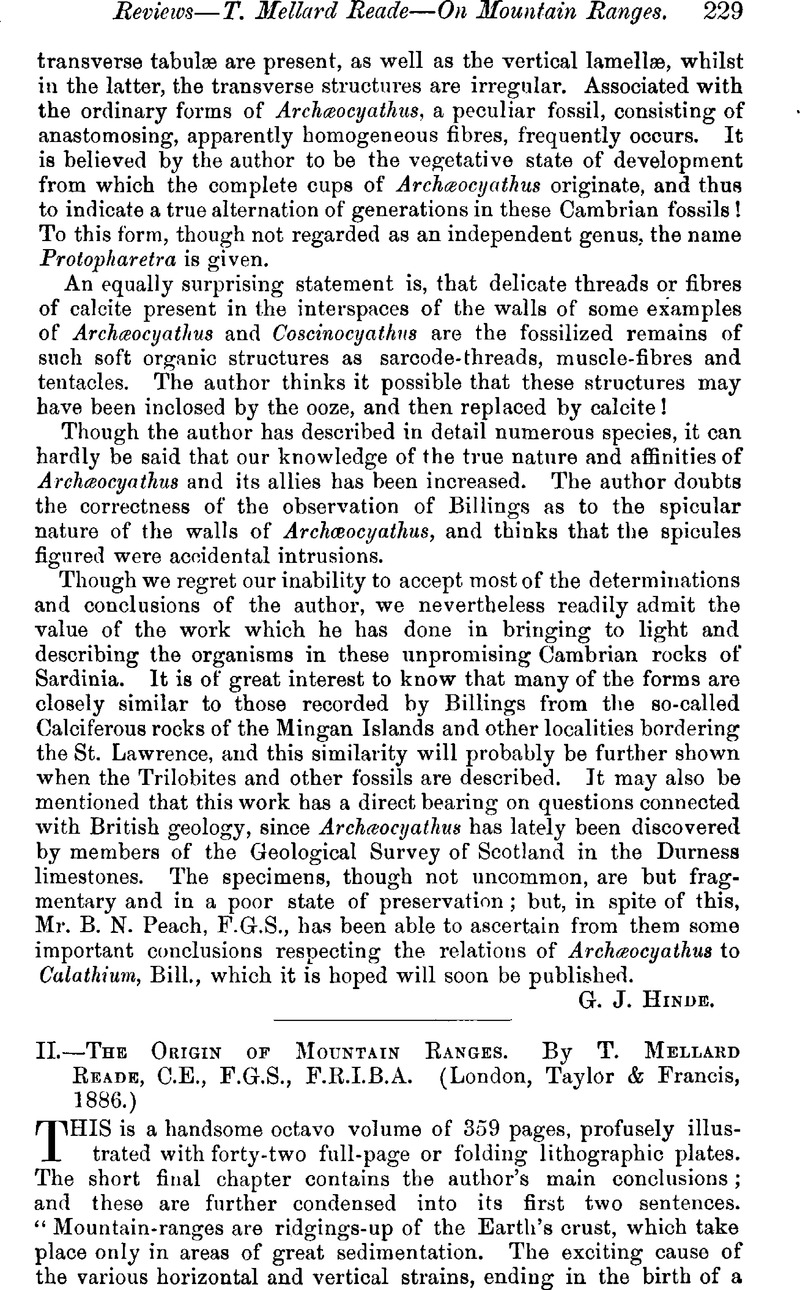No CrossRef data available.
Article contents
II.—The Origin of Mountain Ranges. By T. Mellard Reade, C.E., F.G.S., F.E.I.B.A. (London, Taylor & Francis, 1886.)
Published online by Cambridge University Press: 01 May 2009
Abstract

- Type
- Reviews
- Information
- Copyright
- Copyright © Cambridge University Press 1887
References
page 230 note 1 In a paper upon the subject, which I have lately contributed to the Phil. Mag. (Feb. 1887), I have thrown the whole contraction into the vertical, a supposition, as I have expressed it, “ too highly favourable.”
page 230 note 2 In considering the possible causes of contraction of the nucleus, perhaps enough has not been made of the evisceration of the interior by volcanic action of various kinds. How much must have been vomited forth to form the great basaltic flows— and the pumice-covered floor of the deep oceans—and the dust clouds, which must often and often in geological ages, for months and years at a time, have covered the sky all round the globe !
page 230 note 3 p. 91.
page 231 note 1 p. 68, note.
page 232 note 1 Edin, . New Phil. Journ. vol. lv. p. 138, 1853Google Scholar; and Lyell's, Students’ Elements, p. 577Google Scholar; also Prestwich's, Geology, vol. i. p. 264.Google Scholar
page 232 note 2 Rev. Fisher, O. on Cleavage and Distortion, Geol. Mag. Decade III . Vol. I. p. 400, line 5, 1884.Google Scholar




